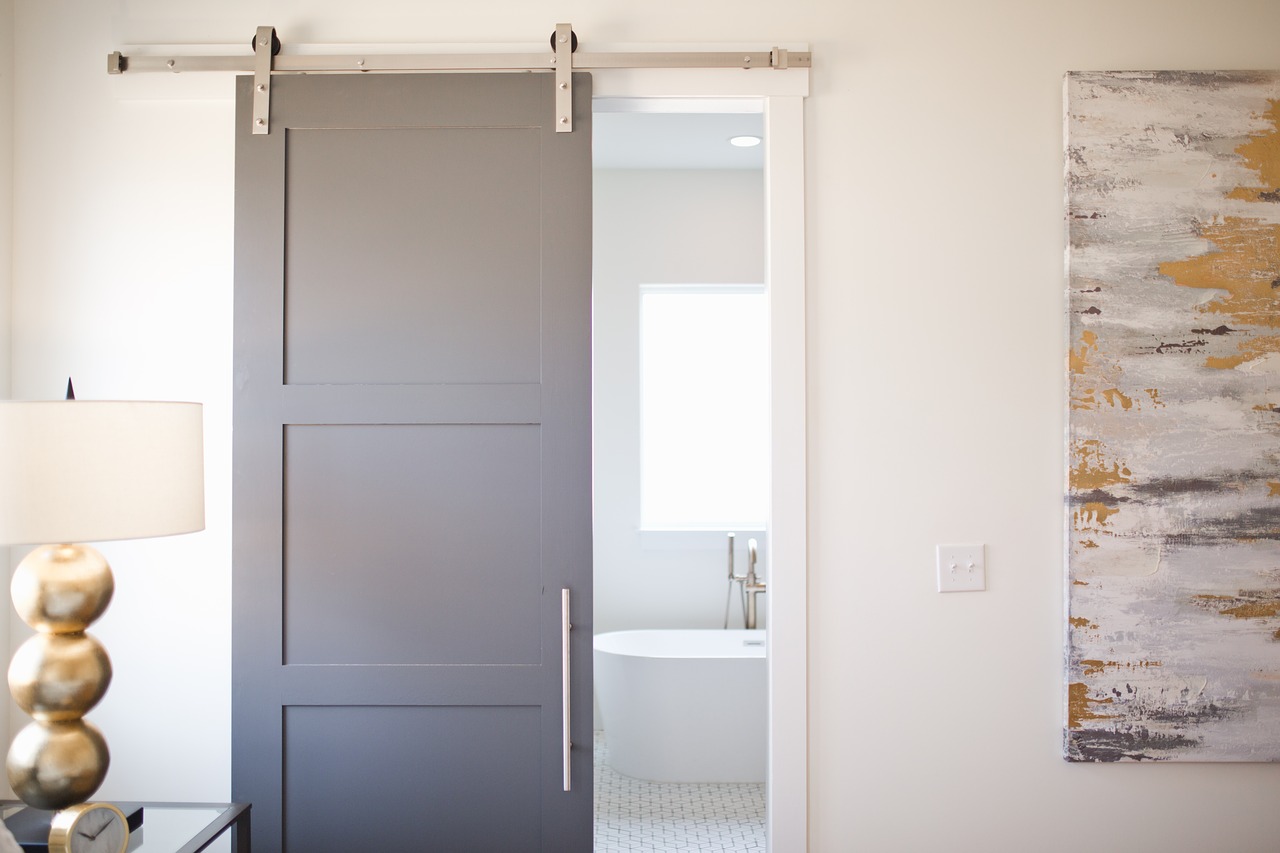Wall-mounting doors can be space-saving as well as backdated. While, pocket doors are timeless, utilitarian as well as flimsy, and don’t settle tightly. Choose the one which fits your interior space, needs, and budget. While designing the interior of your home, you go through various magazines or Pinterest to choose what suits your aesthetics, pocket, and space saver.
Whether to go for the utilitarian wall-mounting or victorian ubiquitous pocket sliding door hardware, you are spoilt for choice. Before refurbishing walls and mounting the cost of installation of sliding hardware with hidden tracks, learn the mechanics of both options.
Defining wall-mounting and pocket sliding door
As the name suggests, the door slides into the ‘pocket’ or cavity of the wall, camouflaged in the adjoining wall. It serves the architectural purpose of minimalism.
This lightweight, thin sliding door hardware travels on rollers suspended from the overhead paths or sliding hardware with a hidden track or glides along the floor.
Wall-mounting hardware is installed above the doorway of the wall. The strip door extends past the opening so that a positive seal is achieved. It is designed to give an industrial and utilitarian look.
Benefits of pocket sliding door kit
Let’s look at the positive aspects:
- Aesthetics: Many homeowners prefer the subdued, simplistic interior design. Hence, go for sliding pocket doors with glass.
- Convenience: Pocket doors can separate two adjoining spaces so that they can be engaged as required. For example, a wide dining space with pocket doors can separate enclosed spaces so people can enjoy dinner parties in the dining room, and yet there is room for privacy nearby.
- Space-saving: In tiny apartments like West Lake Hills apartments, bathrooms with traditional doors can take up to ten feet or more space.
- Wall space: a swinging door takes up the same amount of wall space as its width, in small rooms where you need the wall space for art hanging, furniture arrangement, pockets doors are handy.
Drawbacks of pocket slidings door hardware
Drawbacks:
- Noise, smell, and light: Pocket doors don’t settle as tightly as swinging doors, so they are not compatible with noise cancellation, sealing off a room’s smell (e.g., bathroom & kitchen), or driving away light from one room to the other.
- Wall sturdiness: For a regular 32” pocket door, you need a wall cavity of twice that size. As the wall is devoid of any studs, the door is flimsy and weak.
- Functionality & accessibility: Pockets doors are notorious for falling off the tracks, making screeching sounds while rolling, and problematic to lock. These doors are hard to close and open for people with restricted use of their hands; such as Arthritis patients.

Popular locations for pocket door installation
Pocket doors can be installed almost anywhere inside of your home. These are the popular locations of installation:
1. Master bedroom: When you have a bedroom attached bathroom, a pockets door must be installed to provide privacy when multiple people are using it at the same time.
2. Kitchen & dining room: Most homes today come with an open kitchen attached to a dining room design. But if you throw dinner parties regularly, pocket doors would prove to be decent of the two spaces.
3. Home office: The place where you need focus and peace to get work done. Pocket door provides them cocooned from the family hullabaloo.
4. Laundry room: homeowners usually use spare bedrooms or nook space in the kitchen for the laundry room. With a pocket sliding door track and hardware, you can reduce the noise of the washing machines.
5. Pantry: A single sliding hardware with a hidden track must be chosen for the pantry and it must be in semblance with kitchen design.
Pros and cons of wall-mounting
Pros:
- Space conserving design: A door that does not require swinging space is ideal for tiny apartments and homes to utilize more space and separate space.
- Industrial look: Wall mounting doors give a rugged industrial yet modern chic look which is perfect for house flippers to make their property feel new.
Cons:
- Slide-path limitation: The side path where the door hangs when not closing the space, needs to be free of electric outlets and light switches: no wall hanging can be present.
- Privacy: Due to the slight gap between the door frame and the door itself, conversations can be overheard or disturb others nearby.
- Potential backdated look: While these doors are still trendy in interior design, none can guarantee they will remain so.

Points to consider before installing hardware for your pocket sliding door
- Pocket doors work be in 2*6 walls.
- Make sure that the existing wall has enough space for the pocket door to retrieve into.
- Install an assist bar or fixture for heavy-duty anchors. If steel studs are used in the door frame, you must attach the wallboard to the bottom plate which further limits the usage of the floor space.
- Rerouting pipes and electrical wires can be difficult and pricey. Depending on the depth of the electric box, there wouldn’t be room for standard electrical outlets and switches.
- Doors must be sturdy so that they can sustain long.
- It’s better not to hang anything on the wall. Holes into the pockets can destroy the rails and damage the door.
Conclusion
Interior design is ever-changing. What’s in now, might be backdated tomorrow. So you must invest in sturdy doors, that last long, are affordable, and conserve space as well.
Wall-mounted doors and pocket doors hardware come with their boons and banes. For sliding door track Canada information, visit the K.N. Crowder website today. TYPE CC-W, Cubicle Track, CC-810 Zero clearance hanger, and C-500-W Series are some of the popular sliding door tracks and hardware.








